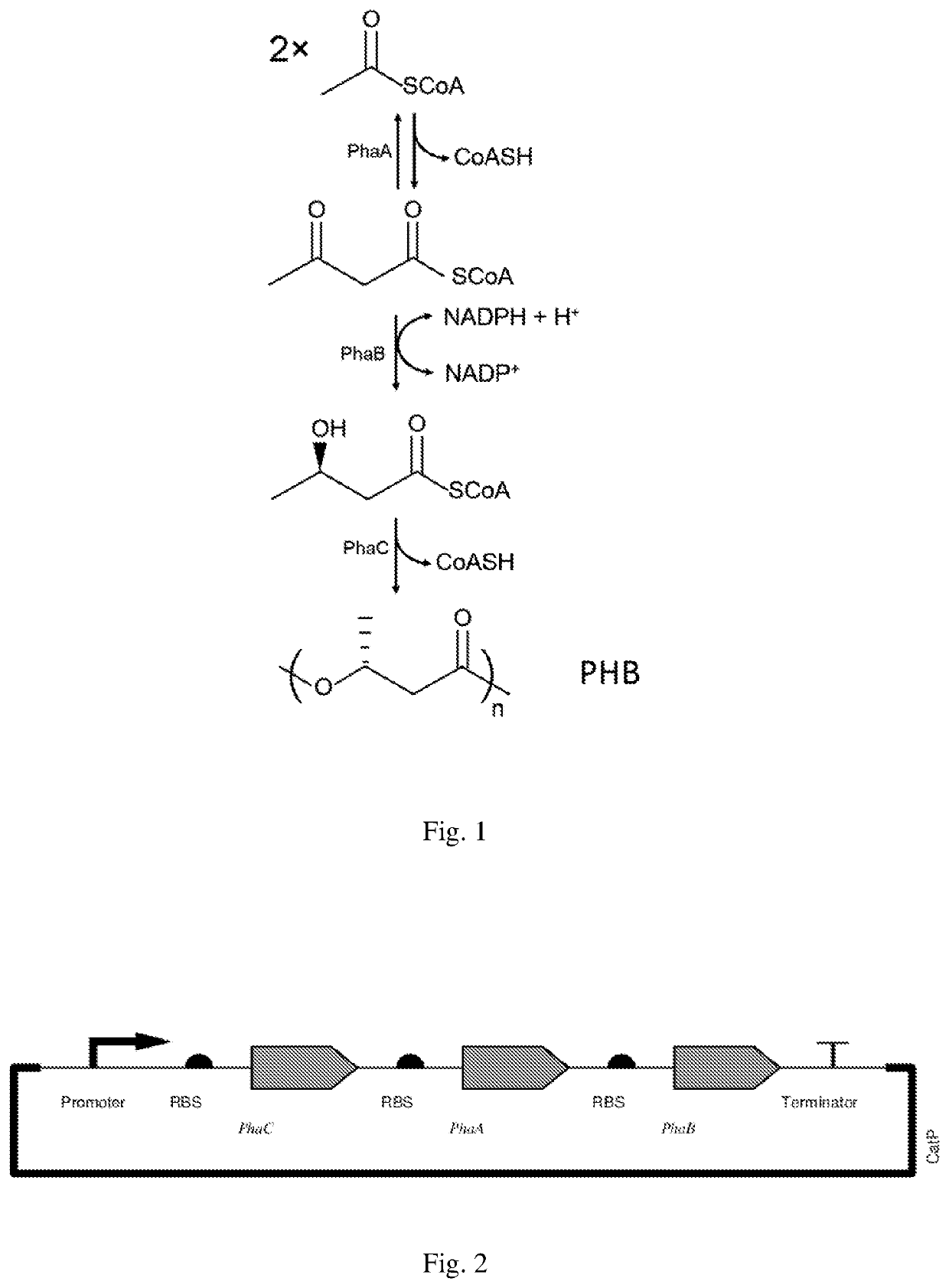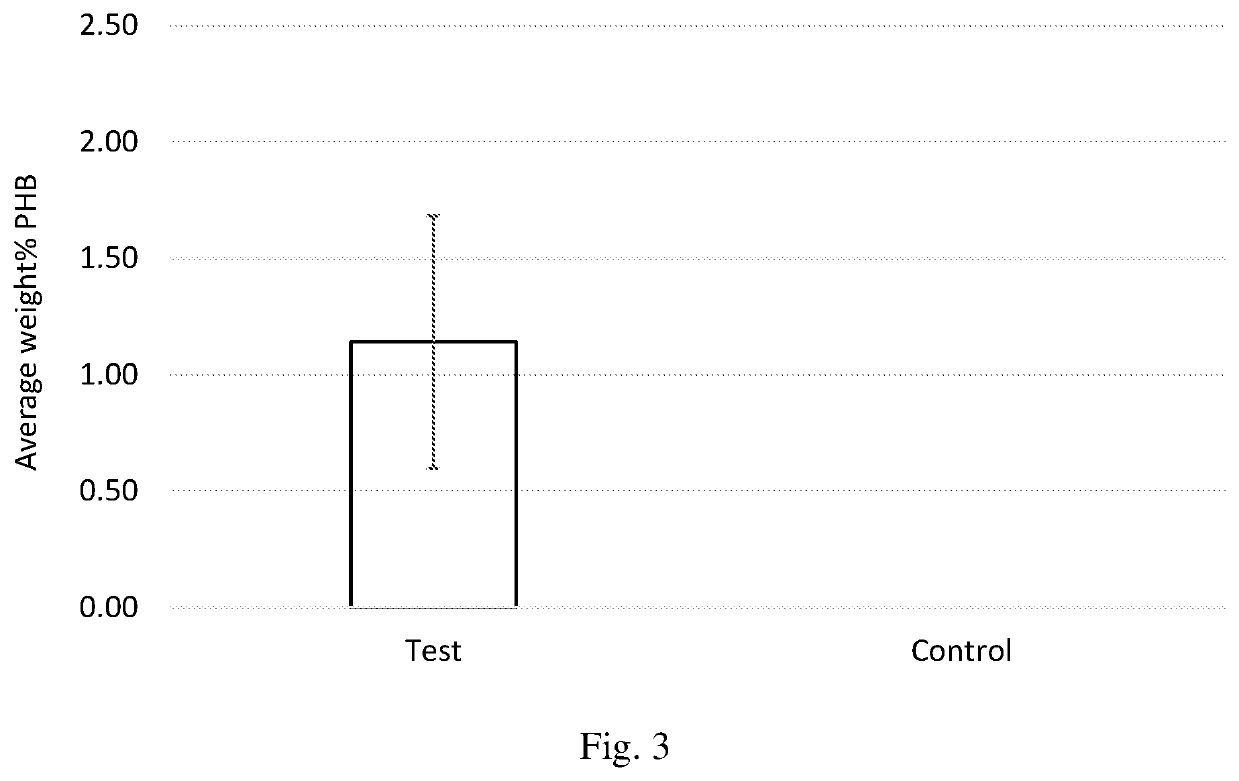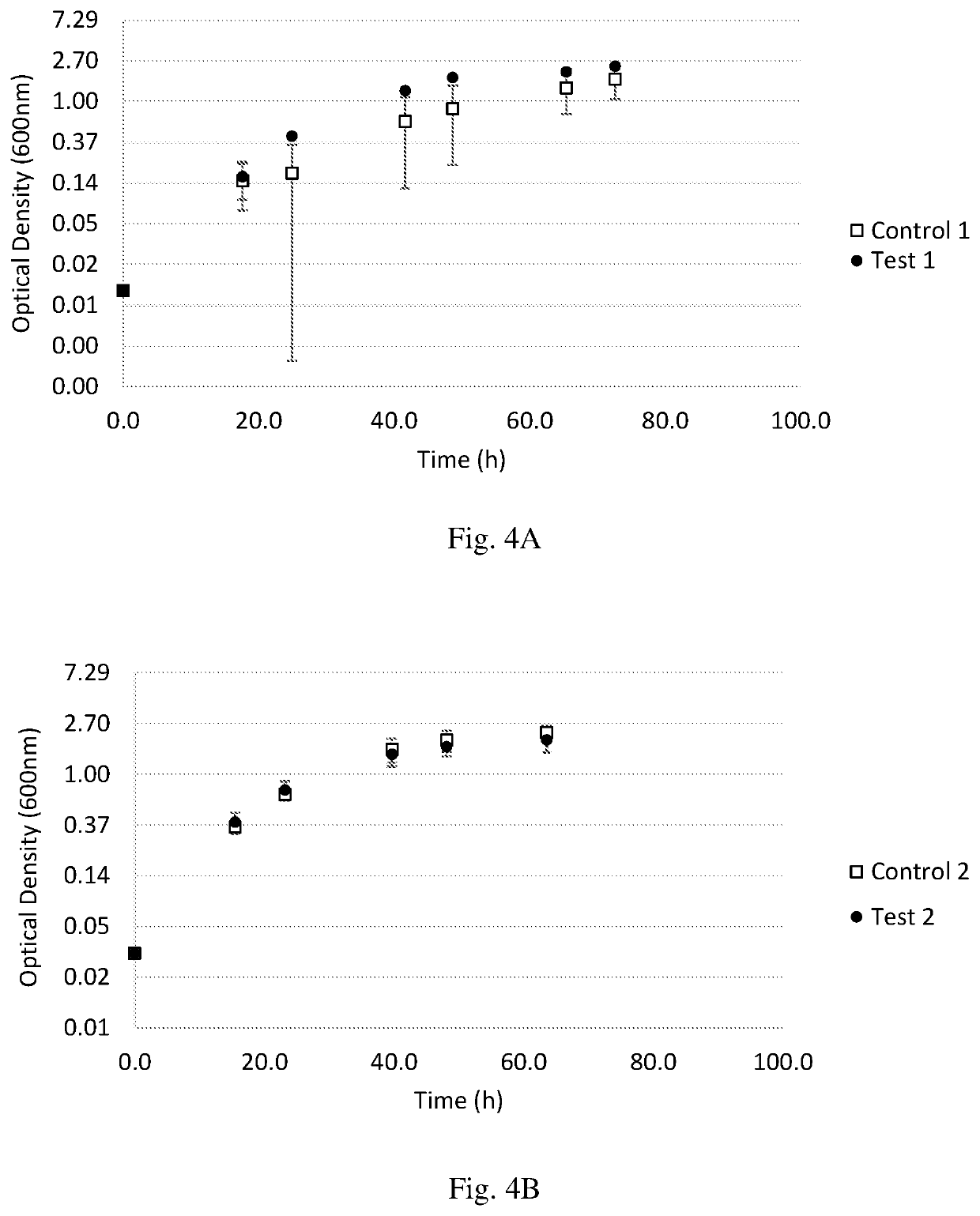Production of polyhydroxybutyrate in wood-ljungdahl microorganisms
a technology of polyhydroxybutyrate and wood-ljungdahl, which is applied in the direction of lysine, transferase, enzymology, etc., can solve the problems of serious problems, pollution, waste of resources, and microorganisms, and the methods for producing such biopolymers are still largely undeveloped
- Summary
- Abstract
- Description
- Claims
- Application Information
AI Technical Summary
Benefits of technology
Problems solved by technology
Method used
Image
Examples
example 1
[0099]This example demonstrates construction of a Wood-Ljungdahl microorganism capable of PHB synthesis.
[0100]PHB pathway genes (phaC, phaA, and phaB) from C. necator (SEQ ID NOs: 1, 4, and 7) were introduced into C. autoethanogenum, a Wood-Ljungdahl microorganism that does not natively produce PHB. Of note, these species have significant differences in chromosomal GC-content. Specifically, C. necator has 66% GC-content (Pohlmann, Nat Biotechnol, 24: 1257-1262, 2006) and C. autoethanogenum has only 31% GC-content (Brown, Biotechnol Biofuels, 7: 40, 2014). Anticipating gene expression issues based on codon usage, the sequences of the PHB genes from C. necator were codon-adapted to better fit a higher expression profile for proteins in C. autoethanogenum. The genes, with novel sequences (SEQ ID NOs: 3, 6, and 9) coding for identical proteins as in C. necator, were synthesized and assembled into the expression vector pMTL83157 (SEQ ID NO: 10). This plasmid is similar to the pMTL8000 se...
example 2
[0103]This example demonstrates the production of PHB from gaseous substrates in Schott bottles.
[0104]The strains constructed in Example 1 were grown in small batches to test for production of PHB. All work was conducted under strict anaerobic conditions (Hungate, Methods in microbiology, pages 117-132, Academic Press, New York, N.Y., 1969). Pressure-rated Schott bottles comprising modified PETC media (Köpke, Appl Environ Microbiol, 77: 5467-5475, 2011) with thiamphenicol for plasmid retention and 2-(N-morpholino) ethanesulfonic acid for buffering were inoculated with the strains, and gas comprising CO, CO2, H2, and N2 (at 50, 18, 3, and 29%, respectively) as the sole carbon source was added to the bottles to 21 psi. The cultures were grown at 37° C. with rotary shaking.
[0105]Cell growth was monitored periodically until the cultures entered stationary phase. Upon completion of growth, the cells were no longer handled under anaerobic conditions. The cells were collected by centrifuga...
example 3
[0110]This example demonstrates the production of PHB from gaseous substrates in a continuous fermentation.
[0111]The strain constructed in Example 1 was tested under continuous fermentation using gas as the main source of carbon, under conditions similar to those described in Valgepea, Cell Syst, 4: 505-515, 2017. Similar to the experiments performed in Schott bottles, the continuous cultures were grown and handled anaerobically. Unlike the Schott bottles, the cultures were grown in a continuous fashion for approximately 20 days with constant feeding of media. Two different gas compositions were used for growth and PHB production: 50 / 20 / 20 / 10 CO / CO2 / H2 / Ar and 50 / 20 / 2 / 28 CO / CO2 / H2 / N2. Gas uptake was monitored using mass spectrometry (MS) and samples were taken periodically to quantify liquid metabolites by HPLC.
[0112]PHB was not quantified until completion of the continuous fermentation. Similar to the Schott bottle experiments, cells were collected by centrifugation, frozen, and dri...
PUM
| Property | Measurement | Unit |
|---|---|---|
| pH | aaaaa | aaaaa |
| pH | aaaaa | aaaaa |
| pH | aaaaa | aaaaa |
Abstract
Description
Claims
Application Information
 Login to View More
Login to View More - R&D
- Intellectual Property
- Life Sciences
- Materials
- Tech Scout
- Unparalleled Data Quality
- Higher Quality Content
- 60% Fewer Hallucinations
Browse by: Latest US Patents, China's latest patents, Technical Efficacy Thesaurus, Application Domain, Technology Topic, Popular Technical Reports.
© 2025 PatSnap. All rights reserved.Legal|Privacy policy|Modern Slavery Act Transparency Statement|Sitemap|About US| Contact US: help@patsnap.com



